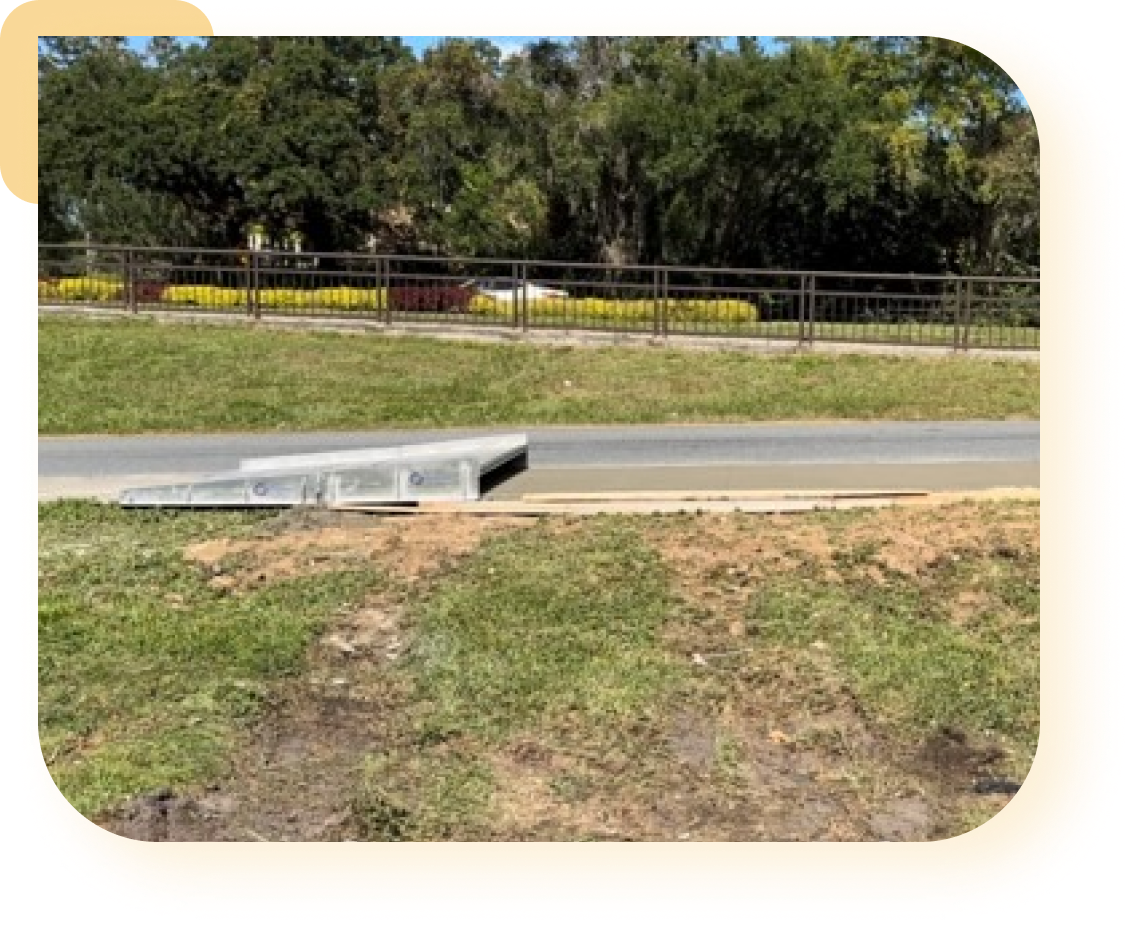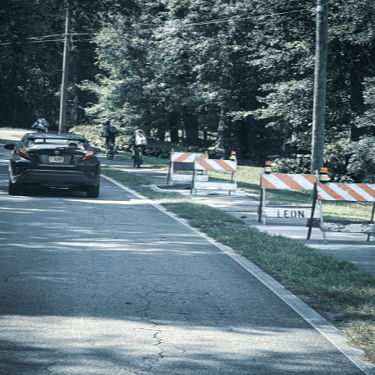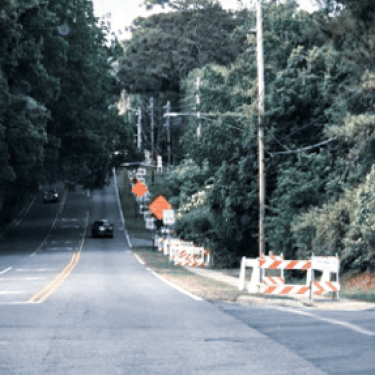Our Solution
SpanPath is a modular elevated pathway system that provides all pedestrians with safe & accessible pathways regardless of condition or construction phasing.
How SpanPath Works

Sidewalk Out of Service
Prior to SpanPath, the only options were to sever the pedestrian network by closing the sidewalk and detouring pedestrians to an alternate route which is many times long distances out of their way.

SpanPath Quickly Installed
Work crews install the SpanPath system in segments directly over the sidewalk or pathway that is out of service by spanning from side to side and protecting the contractor’s work progress.

Sidewalk Immediately Returned to Service
In a matter of minutes, the sidewalk or pathway is returned to normal operation without the need for other devices or signs.
Modular Elevated Pathway
Current Challenges & Possible Solutions

With limited space within Right-of-Way, transportation agencies have faced many challenges with implementing solutions compliant with accessibility and mobility guidelines.
Current Challenges
Approvals for Temporary Traffic Control Plans and detours are costly and take time to obtain. The required signage for these disruptions is distracting and confusing to all road users.
Disruptions in the pedestrian network:
- Restrict access to desired destinations and businesses, increasing the occurrences of pedestrian roadway crossings.
- Lead to improper pedestrian movements
- Increase pedestrian exposure to vehicular traffic
These methods are not truly in compliance with the spirit of national accessibility guidelines, especially PROWAG (Public Right-of-Way Accessibility Guidelines), but have been the industry’s best available practices until now.
Possible Solutions
- Maintain safety and accessibility of sidewalk and shared use path during construction
- Immediate ability to make damaged paths safer and accessible
- Maintenance of Sidewalk or Shared Use Path
- Fulfill desire lines with semi-permanent accessible path until project can be programmed
- Quickly eliminate sidewalk gaps
- Minimize ground disturbance for pathway in environmentally sensitive areas
- Convert to temporary pedestrian bridge with use of I-Beam supports and handrail attachments
- Contractors can provide pathways through Work Zones for workers
Possible Benefits
- Improved safety and accessibility for all pedestrians through work zones
- Eliminate Pedestrian Detours to encourage proper pedestrian movements
- Eliminate detour signing
- Ensure continuous access to businesses affected by construction
- Phasing of work can be more efficient
- Eliminate need for contractor to monitor wet concrete for vandalism
- Ability for States and Local Agencies to comply with existing Federal laws
- Comply with Safe Routes to School and eliminate hazardous walking conditions
Challenges with Current National Standards
When sidewalks are closed due to work zones, the standard practice of detouring pedestrians often leads them to take unsafe and improper routes.
This approach restricts safe access to businesses and contributes to sign clutter, which can distract from important regulatory signage. Additionally, work zone signs are often confusing and prone to incorrect installation, leading to reduced pedestrian confidence.
These detours also fail to fully comply with ADA requirements, as they do not always provide accessible routes to locations along the closed sidewalk. Moreover, the existing sidewalk network is not always available to support safe and efficient pedestrian movement.
Example Problems
Children Endangered by Sidewalk Closure
In the example above, the lack of alternative detour routes for children traveling to and from school presents significant safety risks to one of our most vulnerable pedestrians. Alternate alignments often place children too close to traffic or on dangerously steep cross-slopes, with entire routes being closed off for even small sidewalk patching jobs.
This forces children on bikes to enter traffic lanes to pass work zones, creating hazardous situations where vehicles have had to hard brake to avoid collisions. These conditions are not compliant with federal and state laws, and prior to SpanPath, no feasible alternative existed to ensure safe passage for children around work zones.
Sidewalk repairs along entire block
The absence of alternative detour routes, as shown above, was forcing pedestrians onto unsafe alternate alignments, placing them too close to traffic or on dangerously steep cross-slopes. Entire blocks are often closed for extended periods of time, with sidewalk closures lasting approximately 30 days.
During this time, unsightly signage and barricades fail to address pedestrian needs and do not comply with federal law. Prior to SpanPath, there was no feasible alternative to ensure pedestrian safety and accessibility during these types of closures.



